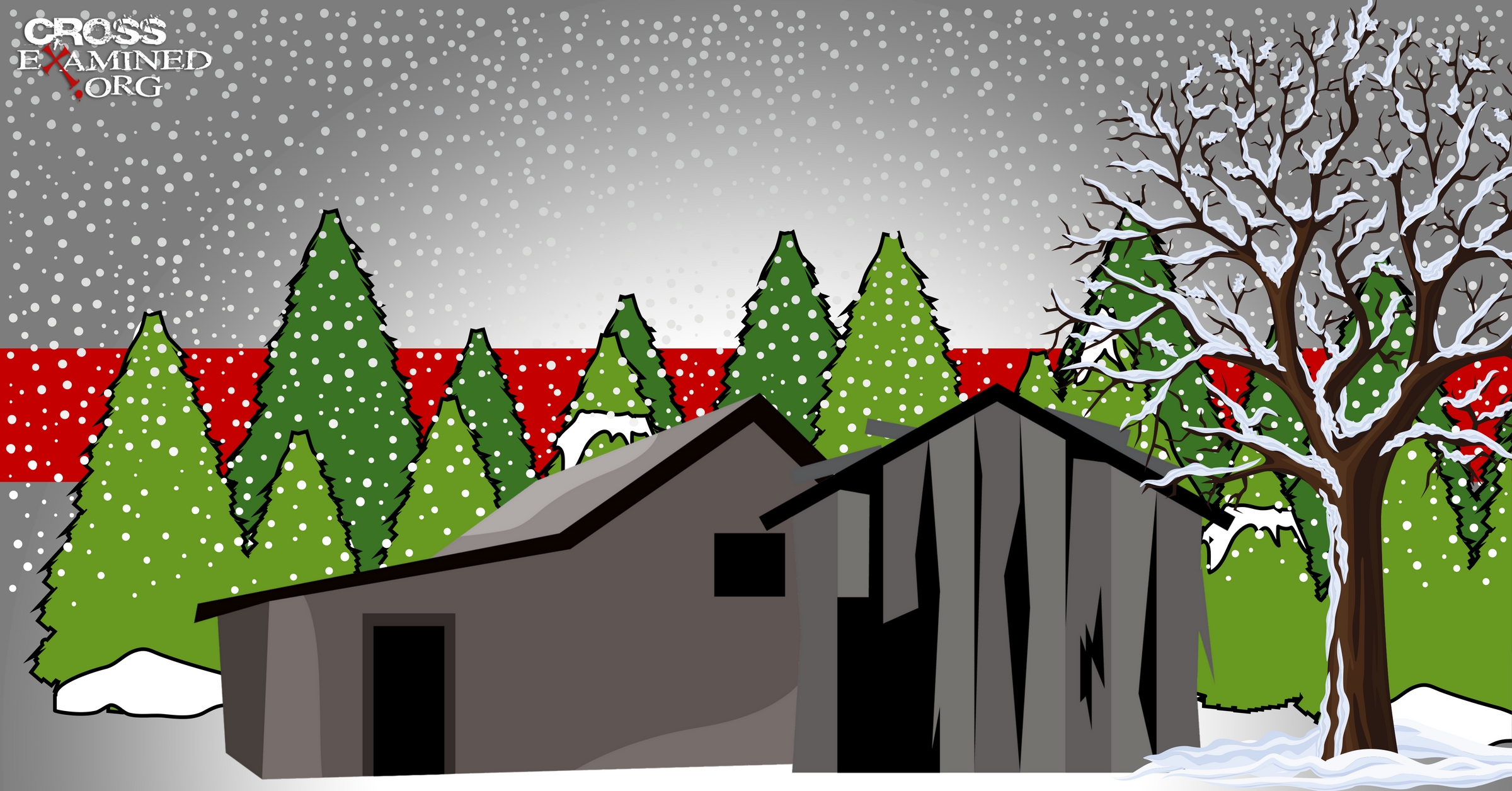5 Apologetics Questions Every Christian Should Learn How to Answer: Christmas Edition
In a previous post, I offered quick answers to 5 apologetics questions that I think every Christian should be familiar with. With many misconceptions and misunderstandings about Christmas, here are 5 Christmas-themed questions with “barebones” quick answers that can easily be committed to memory.
- Was Jesus born on December 25th, AD 1?
Although we celebrate His birth on December 25th, there is no biblical evidence that this is the actual date He was born. “AD” is an abbreviation for anno domini, which means “in the year of our Lord” in Latin. When scholars came up with the BC/AD system, they intended to divide world history based on the birth of Christ. However, they miscalculated the year of His birth, and it wasn’t recognized until later that Jesus was actually born somewhere between 6-4 BC. (1) Matthew 2:1 records that Jesus was born during the reign of Herod the Great. History tells us that Herod died in 4 BC, so Jesus would have been at least 4 years old by AD 1.
- Is Christmas a pagan holiday?
Every year, I see the inevitable “Christmas was a pagan holiday so Christians shouldn’t celebrate it!” claim circulated on social media at Christmastime. Let’s put it to rest, shall we? Christmas was never a pagan holiday. However, in the Roman Empire, there were certain pagan winter ceremonies such as Dies Natalis Solis Invicti, celebrated on December 25th, and Saturnalia, a week long festival that culminated around the same date.
In the early third century, Christians began to associate Jesus’ birth with December 25th. In the fourth century, they made it an official holiday. Why? Some argue it was because it coincided with the date of the Resurrection, others report that it was to challenge and contrast the existing pagan traditions.(2) Either way, it’s interesting to note that Dies Natalis Solis Invicti honored the Roman sun god, and in Malachi 4:2, a prophecy about Jesus calls Him the “Sun of righteousness.” I can’t think of a better way to contrast the festival than to laud the birth of the true Sun—the Light of the world!
- We three kings of Orient are?
There are three inaccuracies just in the first line of this beloved Christmas carol.
- Three? The wise men brought three gifts, but the Bible doesn’t specify how many actually made the journey.
- Kings? Matthew 2:1 tells of “wise men from the East” who followed the star to see the boy Jesus. Because of their high standing in court, early church father Tertullian wrote, “The East generally regarded the magi as kings,”(3) but they were not actual monarchs.
- From the Orient? The wise men did not come from as far east as the Orient but were more likely from somewhere a little closer like Babylon. That was where a certain captive named Daniel was taken centuries earlier and was eventually made “chief of the governors over all the wise men of Babylon” (Dan. 2:48). The wise men would have likely been familiar with the prophecies about Jesus through the writings of Daniel.(4)
- Is the story of Jesus’ virgin birth just a re-telling of ancient mythology?
This frequent claim on social media disintegrates when we actually examine the evidence. Consider the three most common examples—Buddha, Horus, and Mithras. None of the earliest and most reliable sources indicate that these figures were born of a virgin.(5)
- The earliest sources on Buddha specifically mention that he was born of a royal human bloodline. Later stories record more unusual elements surrounding his conception, but they are nothing like the virgin conception of Jesus.
- Horus was an Egyptian deity whose parents were Osiris and Isis, and early stories actually mention Osiris’ seed being in Isis to conceive him.
- Mithraism is an ancient mystery cult with no surviving scripture. All we have are sculptures and paintings, which can be tough to interpret. The earliest version of the birth of Mithras portrays him emerging out of the side of a mountain, leaving a hole in the rock. Unless the mountain was a virgin, that is hardly a “virgin birth story.”
- Was Jesus born in a stable?
Although it is commonly assumed, the biblical account doesn’t actually mention a stable, or a cave, as early church tradition suggests.(6) However, Luke chapter 2 mentions a couple of important details—that He was “laid in a manger” (a type of feeding trough for animals,) and that there was “no room at the inn.” There’s no mention of an innkeeper, and the word translated as “inn” is the Greek word kataluma, which might be better translated “guest room.” In fact, Jesus uses the same word in Luke 22:11 in reference to the Upper Room, the site of the Last Supper.
As I’ve written previously, Mary and Joseph most likely did not attempt to stay at an inn, but it would have been customary for them to stay with Joseph’s relatives in Bethlehem. With the house overcrowded due to the government-mandated census and the guest room occupied, Jesus was probably born on the lower level of the dwelling. This is where animals were sometimes brought inside at night to keep warm and safe from theft, which explains why there was a manger.(7)
Have a well-informed and Merry Christmas!
References:
(1) Alden A. Mosshammer, The Easter Computus and the Origins of the Christian Era (Oxford University Press, 2008) p. 319-356.
(2) Lee Strobel, The Case For Christmas: A Journalist Investigates the Identity of the Child in the Manger (Zondervan, 1998,2005) p. 20.
(3) Tertullian, Against Marcion, 3:13.
(4) William Stob, “The Gospel of Matthew: Righteousness Through Obedience” The Four Gospels: A Guide to Their Historical Background, Characteristic Differences, and Timeless Significance (Ambassador Group, 2007).
(5) J. Warner Wallace, Was the Virgin Conception of Jesus Borrowed From Prior Mythologies? Cold Case Christianity Podcast #53, 2015.
(6) Justin Martyr, Dialogue of Justin, Philosopher and Martyr, with Trypho, a Jew, LXXVIII.
(7) John McRay, Archaeology & the New Testament (Baker Academic, 1991) p. 80-82; Kenneth Bailey,The Manger and the Inn, 2008.












Leave a Reply
Want to join the discussion?Feel free to contribute!